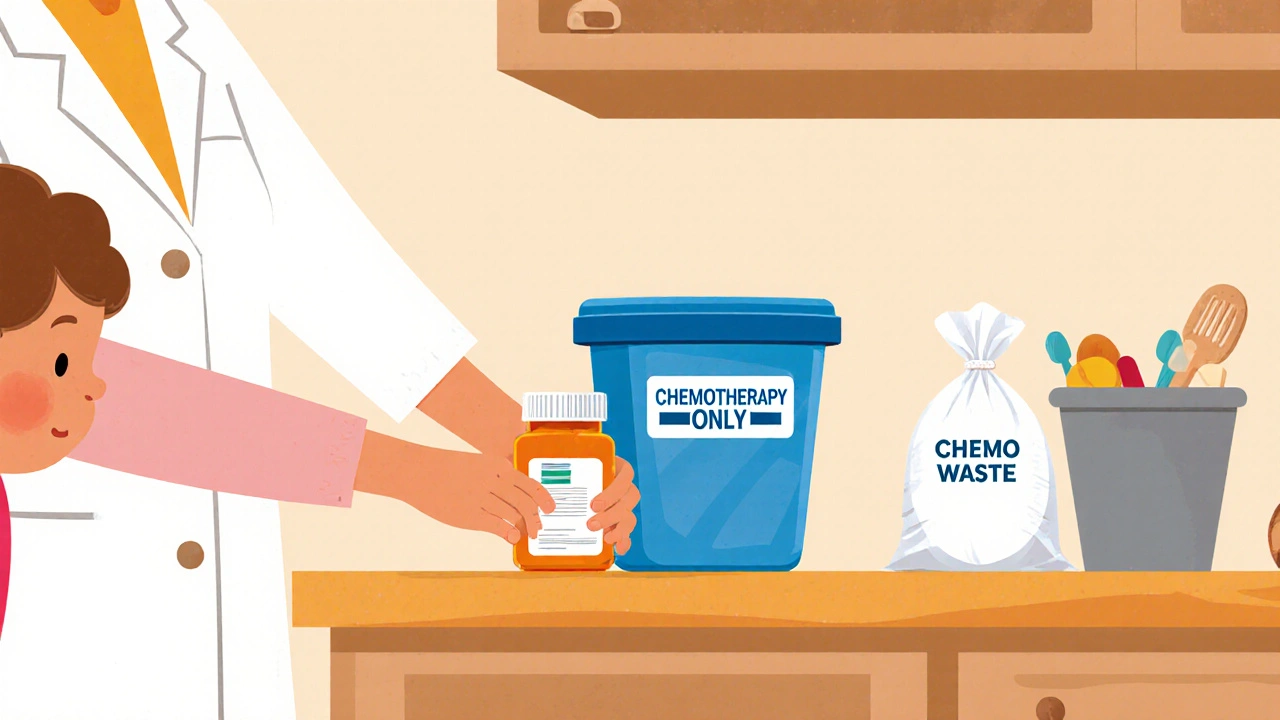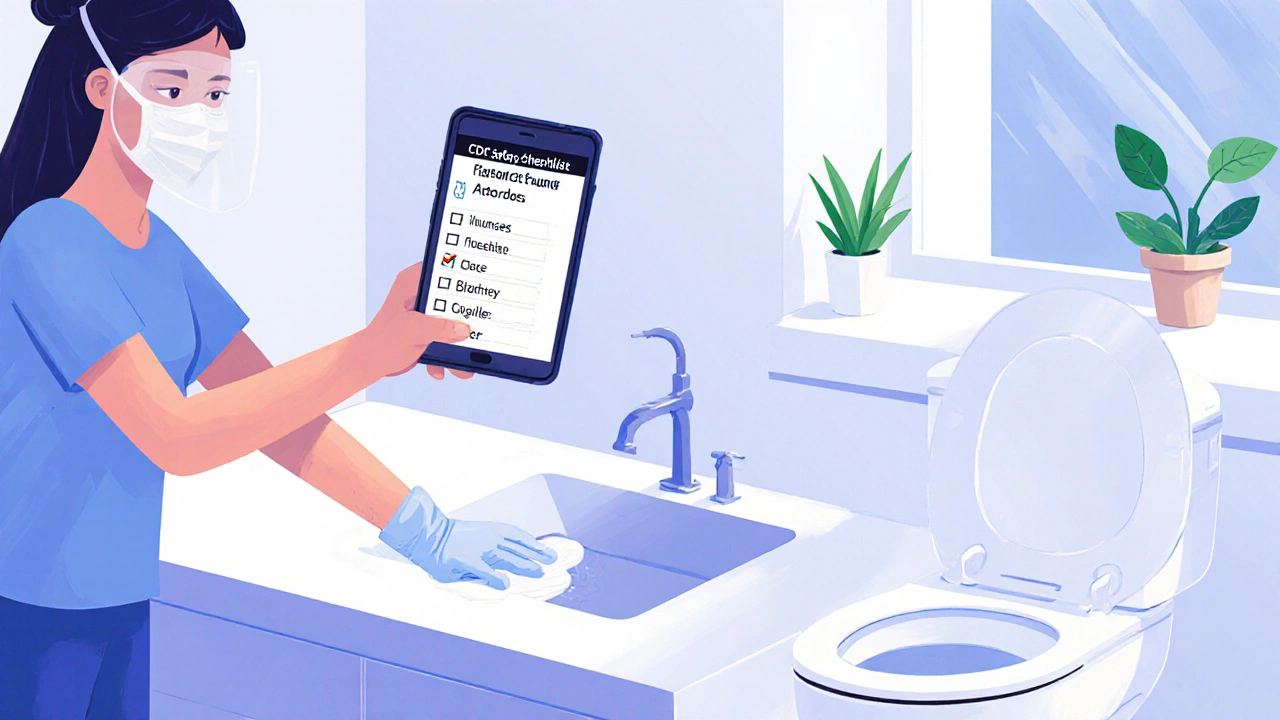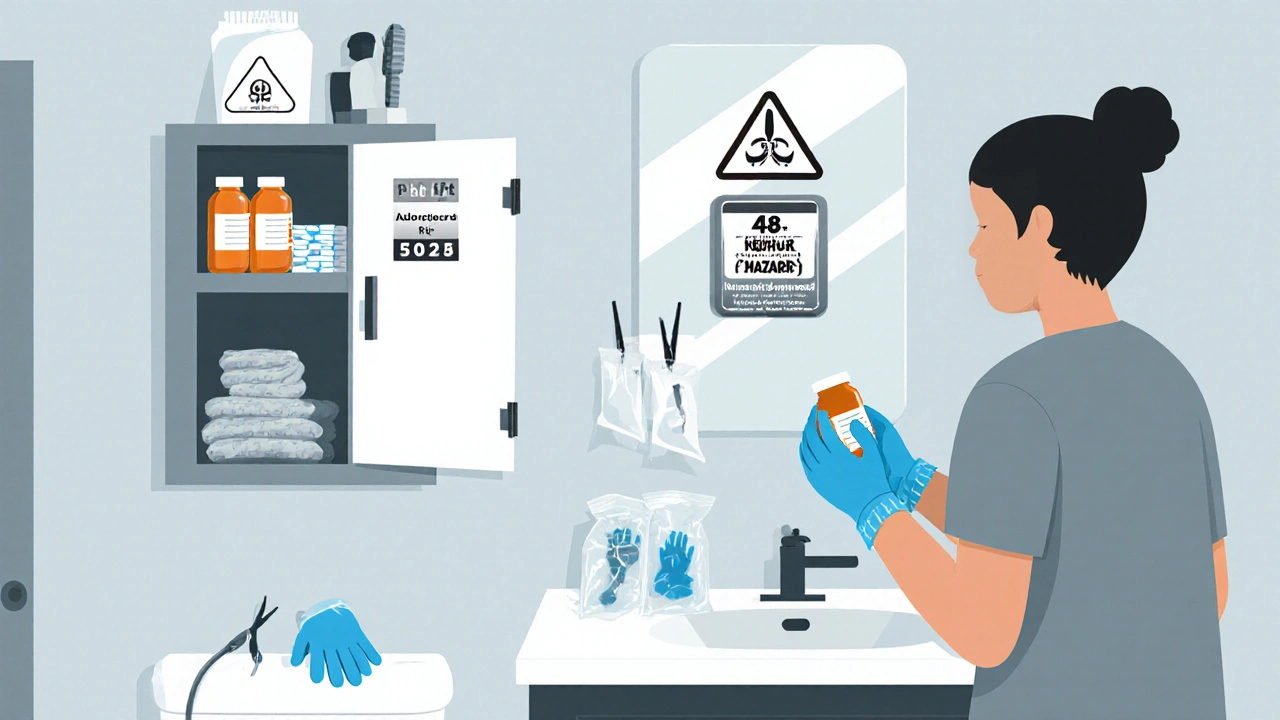Why Home Chemotherapy Requires Extra Care
More than half of cancer patients now receive part of their treatment at home. It’s convenient. It’s less stressful. But it also means you’re handling powerful drugs that can harm not just cancer cells-but healthy ones too. Chemotherapy isn’t like taking a regular pill. These drugs are designed to kill fast-growing cells, and if you or someone in your home comes into contact with them, even accidentally, there’s real risk. Skin rashes, nausea, dizziness, and even long-term damage like fertility problems or secondary cancers can happen from exposure. The good news? You can stay safe if you know exactly what to do.
What Counts as Chemotherapy at Home?
When people think of chemo, they picture IV bags and hospital visits. But today, nearly one in three cancer treatments are taken by mouth. Oral chemo comes in pills, capsules, or liquids. Some patients get IV chemo through portable pumps at home. Even newer treatments like targeted therapies and immunotherapies are now given at home. All of them are considered hazardous. That includes drugs like capecitabine, cyclophosphamide, sotorasib, and dostarlimab. The CDC lists 297 such drugs that need special handling. Don’t assume something is safe just because it’s a pill. Crushing, chewing, or opening capsules can release dangerous particles into the air. Always treat every chemo medication as if it’s a chemical spill waiting to happen.
How to Store Chemotherapy Safely
Storage isn’t optional-it’s life-saving. Keep all chemo meds in a locked cabinet, out of reach of kids and pets. Temperature matters. Some drugs must stay cold: between 36°F and 46°F. Others are fine at room temperature (59°F-86°F). Check the label or ask your pharmacist. Never store chemo in the fridge with food. Use a separate, clearly labeled container. If you’re using a pill organizer, don’t mix chemo with other meds. Use a dedicated container just for chemo pills. Keep the original packaging. It has critical info like expiration dates and storage instructions. And never leave pills on the counter, in a purse, or by the bedside. A 2022 Mayo Clinic survey found that 30% of patients initially stored chemo in unsafe places because they didn’t realize how dangerous it was.
Handling Chemo: Gloves, Tools, and Steps
Never touch chemo pills with bare hands. Always wear nitrile gloves-latex doesn’t protect you. Use two pairs for extra safety. When handling IV bags or pumps, wear gloves and eye protection if there’s a risk of splashing. Never crush, cut, or chew pills. If a pill breaks, don’t sweep it up with your hands. Use forceps or a damp paper towel, then seal it in a plastic bag. Use a dedicated cup to transfer pills from the bottle to your hand. Don’t pour them directly. After handling, wash your hands for at least 20 seconds with soap and water. That’s the same time it takes to sing "Happy Birthday" twice. Keep a chemo spill kit handy. It should include absorbent pads, disposable gloves, sealed bags, forceps, and a marker to label waste. Most cancer centers give these kits for free. If you don’t have one, ask your nurse. Don’t wait until something spills.

The 48-Hour Rule: Protecting Your Household
Chemotherapy doesn’t disappear after you swallow it. Your body gets rid of the drugs through urine, stool, sweat, vomit, and even tears. For 48 hours after each dose, those fluids are hazardous. Some drugs, like cyclophosphamide, stay active for up to 72 hours. During that time, caregivers must wear gloves when cleaning up spills, changing diapers, or handling laundry. Flush the toilet twice with the lid down after every use. If you’re sharing a bathroom, clean the sink, faucet, and toilet seat daily with regular detergent. Keep towels, washcloths, and bedding separate. Wash soiled items in hot water (140°F) with regular detergent-no special cleaners needed. And don’t let anyone else use your toothbrush, razor, or eating utensils. Pregnant women, those trying to get pregnant, and breastfeeding mothers should avoid all contact with chemo meds and contaminated items. A 2019 study found chemo drugs in breast milk up to 72 hours after treatment.
Disposal: What Goes Where?
Don’t toss chemo gloves or empty pill bottles in the regular trash thinking it’s fine. It’s not. But you also don’t need a medical waste bin. For home use, sealed plastic bags in your regular trash are acceptable. Put used gloves, wipes, empty bottles, and absorbent pads from spills in a sealed plastic bag, then throw it out. Never flush chemo pills down the toilet unless the label says to. Some drugs have specific flush instructions because they’re especially dangerous if misused. If you’re unsure, call the 24/7 Chemotherapy Safety Hotline at 1-866-877-7851. The Oncology Nursing Society answers these calls quickly-average wait time is under a minute. A 2021 survey showed 37.5% of patients were confused about disposal. Don’t be one of them. When in doubt, bag it and toss it.
Creating Your Chemo Zone
Designate one area in your home as your chemo zone. Usually, that’s a bathroom with good ventilation. Cover the counter with plastic-backed absorbent pads. Keep your spill kit, gloves, and hand soap right there. This keeps everything contained. After handling chemo, don’t walk around the house in the same clothes. Change into clean ones before touching other surfaces. If you’re using a pill dispenser like MedMinder Pro Chemo (FDA-approved in 2022), it will remind you to wash your hands and log your doses automatically. That kind of tech helps reduce mistakes. Keep a chemo diary too-write down the date and time of every dose. That way, you know exactly when the 48-hour window ends. It’s simple, but it prevents accidents.

Training and Support Are Non-Negotiable
You can’t just read a handout and expect to get it right. Formal training takes 2-3 hours with an oncology nurse. That’s standard at most cancer centers. They’ll show you how to handle pills, clean spills, use gloves, and respond to emergencies. If your provider didn’t offer this, ask for it. A 2022 study of 1,200 home chemo patients found those who got training had 60% fewer safety incidents. Rural patients are more likely to lack training-only 58% knew about the 48-hour rule compared to 82% in cities. That gap is dangerous. Don’t assume you’ll figure it out. Call your nurse. Watch the CDC’s free video guide. Download their printable checklist-it’s been downloaded over 87,000 times. You’re not alone. Support exists.
What’s Changing in Home Chemo Safety
The rules keep getting stricter-and smarter. In 2022, the FDA required all oral chemo packaging to include clear home safety instructions. There are now 147 drugs with this labeling. OSHA increased fines for home health agencies that skip training-from $14,502 to $15,625 per violation. The CDC added 27 new drugs to the hazardous list in 2023, including newer targeted therapies. And the National Cancer Institute is investing $4.7 million to improve safety education in rural areas. Early results show a 28% drop in incidents. The goal? By 2030, 80% of chemo will be given at home. That means better systems, better tools, and better training are coming. But right now, your safety depends on what you do today.
What to Do If You Accidentally Get Exposed
If you get chemo on your skin, wash the area immediately with soap and water for 15 minutes. If it gets in your eyes, rinse them under running water for 15 minutes. If you inhale powder or spray, go outside for fresh air. Call your oncology team or the Chemotherapy Safety Hotline. Don’t wait for symptoms. Even if you feel fine, exposure can cause delayed reactions. Keep the medication’s safety sheet handy-it has emergency steps. If you’re pregnant or think you might be, get medical advice immediately. There’s no safe level of exposure during pregnancy.
